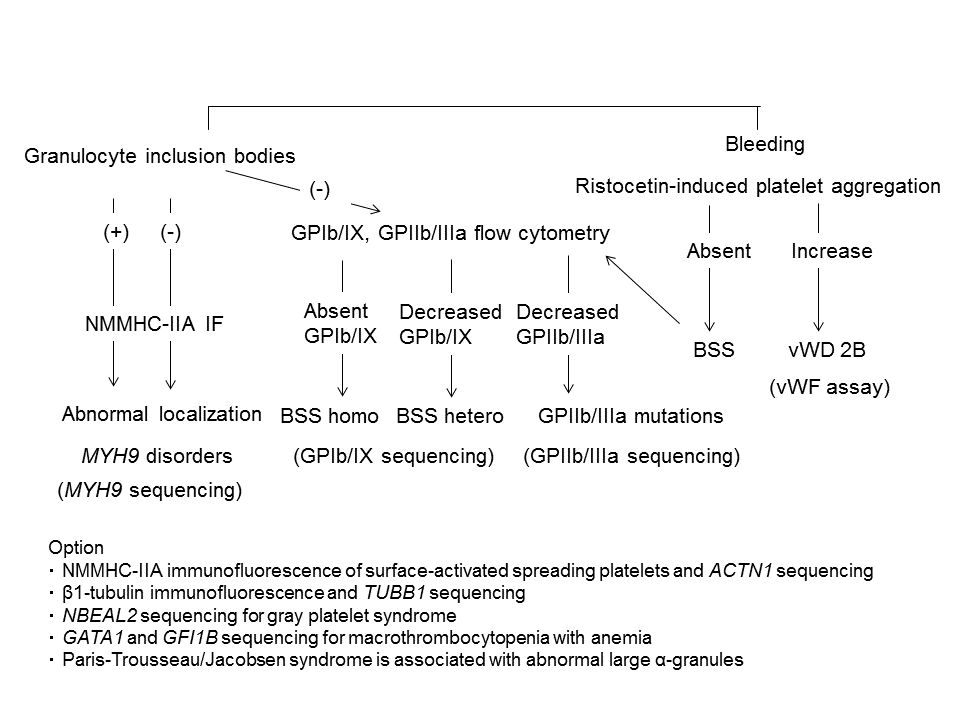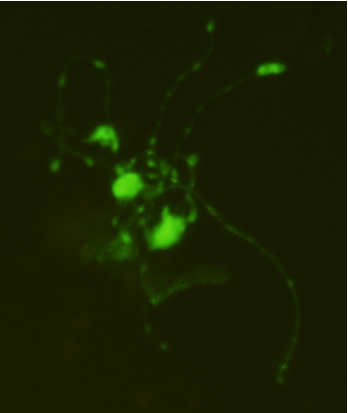Laboratory of Molecular Diagnosis
Chief: Shinji Kunishima, PhD
Working on Inherited Platelet Disorders
Inherited platelet disorders include quantitative (thrombocytopenia) and/or qualitative platelet defects. Once considered rare, these disorders are now being encountered in routine medical practice. However, it is still difficult to make a correct diagnosis of congenital thrombocytopenia.
This laboratory is working on inherited platelet disorders. Especially, we are very much interested in the development of diagnostic flow chart for congenital macrothrombocytopenia (Figure 1).
Figure 1 Proposed diagnostic flow chart for congenital macrothrombocytopenia.
We have characterized the genetic and molecular abnormalities of many Bernard-Soulier syndrome cases (1). We localized the May-Hegglin anomaly responsible locus (2), identified the gene (3), established a novel diagnostic method (4), proposed a novel disease entity MYH9 disorders, and elucidated the molecular pathology (5). We identified new genes for congenital macrothrombocytopenia, TUBB1 mutations and ITGA2B/ITGB3 mutations (6,7). Recently we performed whole-exome sequencing and identified ACTN1 as a novel gene responsible for congenital macrothrombocytopenia (8) and proposed a diagnostic biomarker (9).
Neutrophil inclusion bodies and abnormal myosin IIA accumulation in MYH9 disorders.
Patients with MYH9 disorders sometimes suffer from nephritis and hearing disability (Alport manifestations). We are also working with collaborators in order to elucidate the renal and inner ear pathology and to establish prophylaxis and therapy for nonhematological complications.
In addition to conventional biochemical, molecular biological, genomic techniques, we employ stem cell technology to elucidate megakaryocytopoiesis and thrombopoiesis in health and disease.
Proplatelet formation of GFP-transduced cultured megakaryocyte
References
1. Kunishima S, et al. Blood 84:3356, 1994.
2. Kunishima S, et al. Hum Genet 105:379, 1999.
3. Kunishima S, et al. Blood 97:1147, 2001.
4. Kunishima S, et al. Lab Invest 83:115, 2003.
5. Kunishima S, et al. Blood 111:3015, 2008.
6. Kunishima S, et al. Blood 113:458, 2009.
7. Kunishima S, et al. Blood 117:5479, 2011.
8. Kunishima S, et al. Am J Hum Genet 92:431, 2013.
9. Kunishima S, et al. Blood 126:2525-6, 2015.
All Publications



